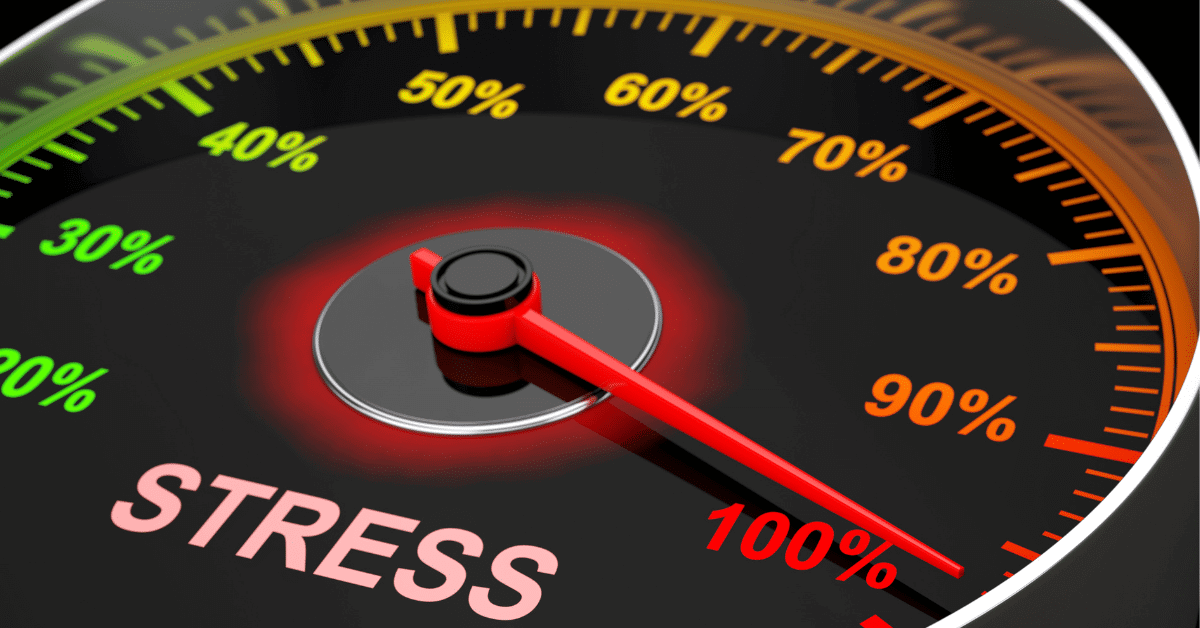Subtopics
Latest Posts On This Topic
- 8 Essential Biomarkers for Mastering Stress Management
- The Ultimate Guide to Choosing Your Sleep Tracker
- Stress Management: A Guide to Choosing an HRV Stress Tracker
- Unlock Your Potential with 5 Key Personality Tests
- The Best HRV Monitors This Year: Reviewing The Top 5
Or check out all of our blogs on “Measuring Stress”
Managing stress is critical to maintaining a healthy lifestyle in our fast-paced world. We all experience stress, but understanding how to measure it accurately can be a game-changer for our physical and mental health 1.
This introduction will guide you through the science of stress measurement, including the tools and scales available to quantify your stress levels effectively. Stay tuned as we explore how to assess and manage stress, tailoring approaches to fit your unique needs.
How can I measure stress levels accurately?
To accurately measure stress levels, consider using a combination of psychological questionnaires, such as the Perceived Stress Scale (PSS), and physiological measures like heart rate variability (HRV) or cortisol levels in saliva. These methods can offer both subjective and objective insights into stress.
Effective Methods for Measuring Stress
- Psychological Surveys: Use subjective assessment tools like the Perceived Stress Scale (PSS).
- Physiological Measures: Track heart rate variability (HRV) as an objective stress indicator.
- Cortisol Tests: Analyze saliva or blood for cortisol levels, a stress hormone.
- Biofeedback Devices: Utilize technology to monitor physiological responses to stress in real-time.
- Wearable Technology: Employ smartwatches or fitness trackers that can detect stress through various biometrics.
- Mindfulness and Self-Reflection: Practice mindfulness techniques and self-reflection to identify personal stress triggers.
- Behavioral Observations: Notice changes in behavior or mood as indirect stress indicators.
Unraveling Stress Measurement
Understanding the intricate ballet of stress within our bodies begins with deciphering the language of our physiological responses. The science of stress measurement illuminates how our systems, from the nervous to the autonomic nervous system, react to stressors.
It’s not just about the stress we feel; it’s about the unseen dance of cortisol levels, heart rate variability, and other biomarkers that narrate our body’s stress story. Tools like the Perceived Stress Scale allow us to measure stress, offering a glimpse into our psychological stress in health.

Similarly, wearable devices track our physiological whispers, translating the beats of our hearts and sleep into data we can understand. This exploration is not just academic; it’s a step towards mastering our stress response, turning the cacophony of stress into a symphony we can conduct.
Assessing Stress Levels
Diving into assessing stress levels is akin to mapping the contours of our emotional landscape. Conducting stress assessments with questionnaires like the Perceived Stress Scale mirrors our subjective experiences of stress, reflecting the variance in our stress responses.
On the flip side, objective measures such as heart rate variability and cortisol levels serve as the yardsticks for our physiological engagement with stress. This duality of measurement—objective vs. subjective—paints a fuller picture, capturing the ebb and flow of stress in our lives.

Whether it’s the adrenaline rush in the face of an acute stressor or the slow burn of chronic stress, these assessments help us navigate our stress landscape more confidently, empowering us to identify and address our stressors with precision.
Personality Tests and Their Relationship to Stress Management
The interplay between our personalities and stress management strategies is as complex as fascinating. Personality tests peel back the layers of our persona, revealing how our unique traits shape our perception of stressors and our resilience in the face of psychological and physiological stress.
This knowledge is empowering, offering us tailored strategies for managing stress that align with our personality’s strengths and weaknesses. It’s about understanding that the key to managing stress lies in the external tools we use and the internal landscapes we navigate.
By aligning our stress management practices with our personalities, we enhance our ability to cope with stress and turn these challenges into opportunities for growth and self-discovery.
| Technique | Category | Effectiveness Rating (1-10) | Comments |
|---|---|---|---|
| Mindfulness Meditation | Mental | 8 | Improves focus, reduces anxiety |
| Physical Exercise | Physical | 9 | Boosts mood, improves sleep |
| Deep Breathing Exercises | Mental/Physical | 7 | Reduces immediate stress levels |
| Time Management Strategies | Cognitive | 8 | Decreases procrastination, lowers stress |
Managing Stress Effectively
In the quest to manage stress effectively, we find ourselves juggling various strategies, from the scientifically grounded to the personally meaningful. It’s about harnessing the power of stress management techniques through mindfulness practices, physical activity, or the structured approach of the 4 A’s of stress management.
The art lies in customizing these techniques to our individual needs, recognizing that the effectiveness of any strategy is as much about its relevance to our lives as it is about its scientific basis. Measuring stress levels at home and in research becomes a tool for fine-tuning our approach, allowing us to navigate our day-to-day with greater ease and resilience.
It’s a journey of adapting and adjusting to manage stress and thrive despite it.
| Tool/Technique | Type | What It Measures | Use Case |
|---|---|---|---|
| Perceived Stress Scale (PSS) | Questionnaire | Subjective stress levels | Psychological research, personal assessment |
| Heart Rate Variability (HRV) Monitor | Wearable Device | Autonomic nervous system activity | Physical and mental health monitoring |
| Cortisol Level Blood Test | Biological Test | Stress hormone levels | Clinical diagnosis, health research |
| Mindfulness-Based Stress Reduction (MBSR) Program | Technique | Stress coping skills | Personal development, therapeutic intervention |
The Future of Stress Measurement and Management
The stress measurement and management landscape brims with potential as we look towards the future. Advances in technology promise new ways to understand and manage stress, from biomarkers that offer a window into our physiological state to smart devices that make monitoring stress a seamless part of our daily routine.
The future holds a vision where managing stress becomes more intuitive, grounded in a deep understanding of the interplay between our bodies and environments. This evolving field not only anticipates the challenges of tomorrow but also offers hope for a future where stress, while inevitable, is manageable, measurable, and, ultimately, masterable.
Personal Thoughts
Through my struggles with stress, I’ve learned the importance of measuring and understanding it scientifically. This process empowered me to identify effective strategies for managing stress, moving beyond anecdotal solutions to those backed by evidence.
Embracing a scientific approach to stress measurement transformed my approach to stress management. It shifted my focus to methods that not only felt subjectively beneficial but were also objectively verifiable. This change was crucial for finding genuinely effective solutions.

